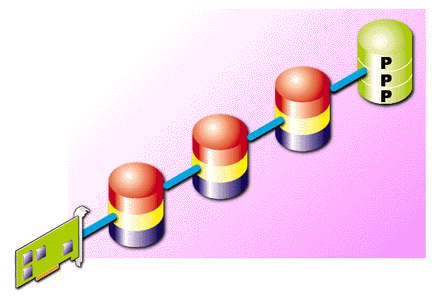DCSE Self-Study Training MaterialsRAID Theory |
|
||||||||
RAID 3
RAID 3 spreads the data from a file across the drives in the array (similar to RAID 0). The RAID controller subdivides the file into pieces the size of a stripe in a stripe set, which facilitates parallel access to the parts of the file. The controller then simultaneously writes the pieces of the file to the destination stripes. The controller fills stripes until the file is completely stored. As the controller writes each group of stripes, it calculates a parity stripe and writes it to a drive that is dedicated to storing the parity information. If any one of the disks should fail, the information on the remaining disks is sufficient to reconstruct the information on the failed disk. RAID 3 offers greater storage efficiency than RAID 1 while still providing protection for the data. RAID 3 is often referred to as Striping With Dedicated Parity. With the minimum three drives needed for RAID 3, the storage efficiency is 66 percent. With six drives, the storage efficiency is 87 percent. The main disadvantage to RAID 3 is poor performance for multiple, simultaneous, and independent read/write operations.

RAID 3: Controller calculates parity stripe from three data stripes and stores them all in parallel on synched drives.